Welcome to Roller Coaster Inspection 101! If you’re a frequent visitor of amusement parks you are probably aware that the roller coasters are inspected on a daily basis in order to ensure the rides run safely. But what does a roller coaster inspection entail? The goal of an inspection is to prevent accidents, duh! If maintenance personnel find something dangerous they are going to close the ride, whether it’s for a few minutes or a few days. Preventive maintenance is extremely important when it comes to thrill rides. There are a multitude of tasks that need to be performed on each area of the ride to keep it maintained and in great running condition.
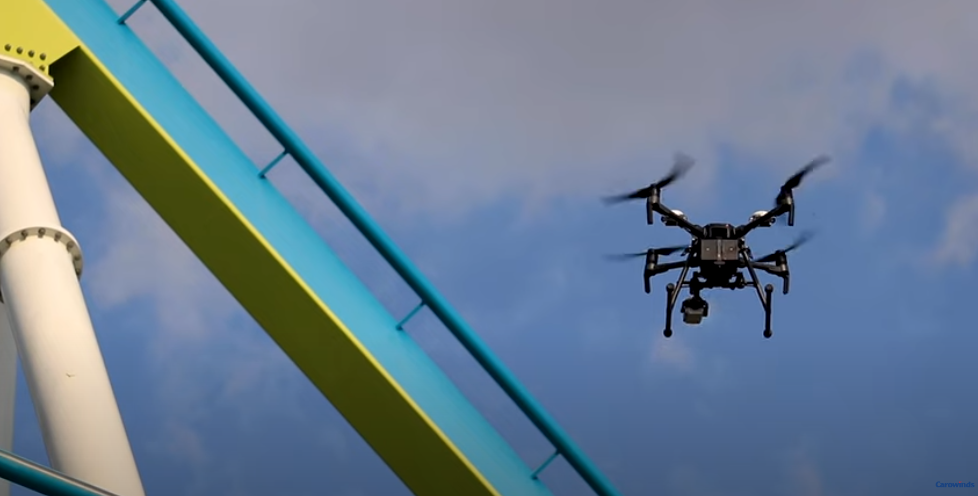
A drone inspects Fury 325 at Carowinds
First, before any roller coaster inspection can occur, the ride must be locked out. This is extremely important for safety of the workers. There have been too many incidents in the amusement industry where a ride has been started with workers in dangerous areas leading to unfortunate accidents. (See one of our previous articles for more information about lock out tag out procedures).
A roller coaster’s track is typically inspected every day before the park opens, at the request of management during the day, or due to an accident or near accident. Maintenance personnel will visually inspect high stress areas, such as the bottom of a big drop or the underside of the rails of airtime filled hills. Before the coaster can be ran safely the track must be free of obstructions, such as tree limbs or litter which might have fallen on the rails during the night or after a strong storm. All the welds on handrails, stairs, and, catwalks are examined for cracks.
Most coasters require booster tires to move the trains from one block zone to another. These tires must be properly maintained and inspected for proper inflation and wear. This may include keeping the tire pressure at a specific level, such as fifty pounds per square inch (PSI).
There are several items to check on the lift hill including: chain dampeners, anti-rollback on gearbox, sprocket and intermediate chain, chain trough, chain and chain tension. In the station and queue areas the station air gates should be checked for proper alignment. All buttons and lights on the operator’s panel should be working correctly. Transfer tracks should be locked in place. Brake shoes should be checked for excessive wear and proper alignment.
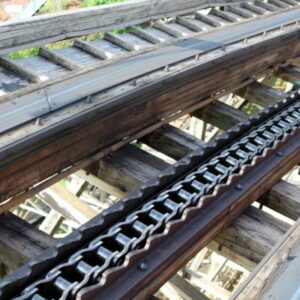
Close up of the chain lift on Thunderhead at Dollywood.
On a behind the scenes tour, Dollywood’s Pete Owns said that every one of Thunderhead’s 250,000 bolts on the wood coaster sees a wrench at least once in the course of a year.
Now, let’s look at the vehicles. The exact tasks vary from one coaster to another but typical daily inspections on the roller coaster cars include: Inspecting the restraint system for proper operation, inspect condition of upholstery, condition of fiberglass, hitch yokes, safety cables, wheels for rotation, damaged urethane and proper oil level, castle nuts securing wheels, chain dogs, anti roll back dogs, and shafts, axle center spindle for looseness, undercarriage of trains for cracks and missing safety wire for nuts. Excessive grease may need to be cleaned from each of the cars.
Before the ride can open to the public it must be cycled a certain number of times. The E-stop or emergency stop must be checked for the proper operation of the ride. This may include bringing the coaster’s train to a complete stop on each of the ride’s brake sections of track. After a visual inspection, the maintenance crew runs the roller coaster empty of passengers, watching and listening for any abnormalities. Then the crew may get on for their own ride, this time paying attention to anything in the feel and the sound of the ride that seems out of sync.
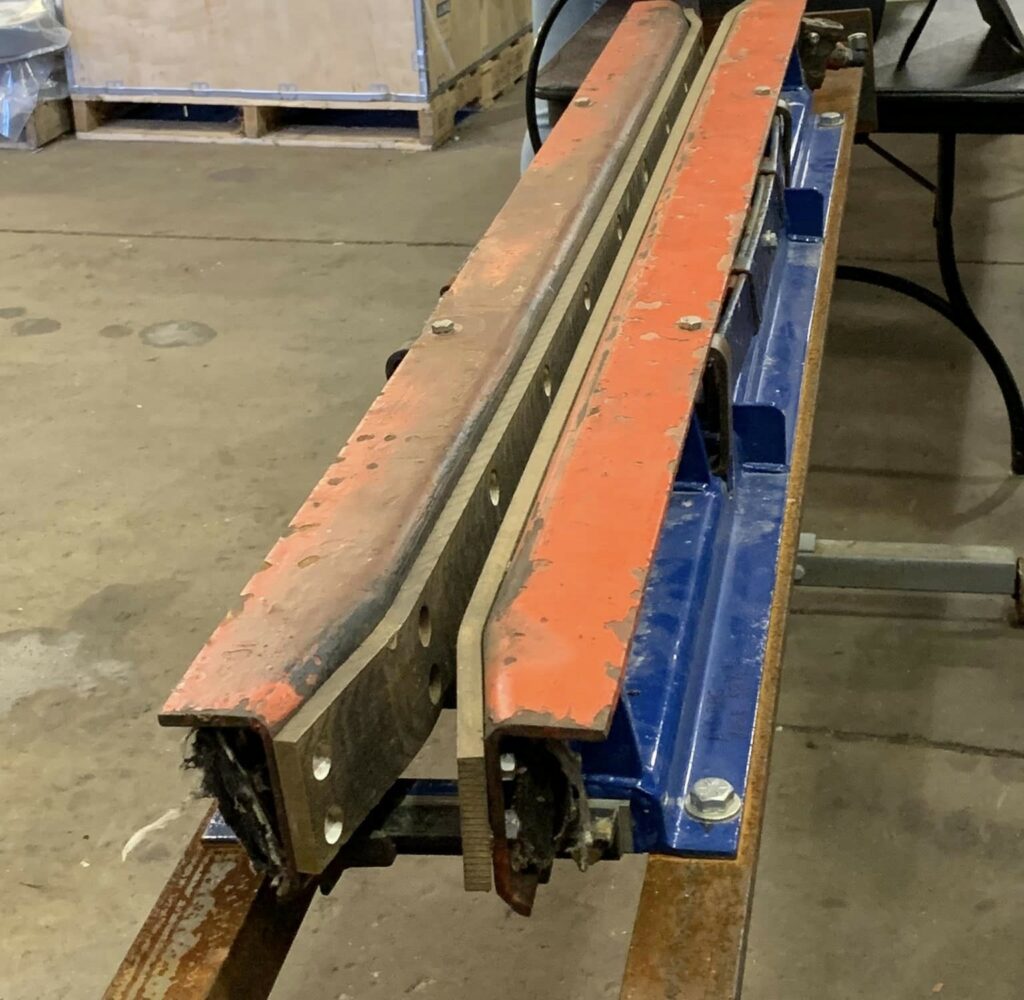
The roller coaster is open to the public only after a complete inspection of the cars, lap bars, and tracks that can take up to four hours or longer. The number of technicians inspecting each ride really varies on the size and complexity of the ride. A larger roller coaster will obviously take more time and personnel to inspect versus a kiddie ride. Different technicians have different job responsibilities, such as a mechanical, carpenter, electrical, fiberglass, etc. It takes three hours to inspect Merlin’s Mayhem at Dutch Wonderland, a 1,300-foot suspended family coaster.
Ride components are checked for any signs of wear and often need replacing. There are two common terms when it comes to repairs. MTBF stands for the mean time between failure, or the average time between breakdowns of a ride or component. Ideally, this amount of time would be large as possible, like weeks or months or even years. If the ride does break down then we need to consider MTTR which stands for the mean time to repair or the average amount of time it takes to fix a ride. Remember this (from Steve Alcorn’s Theme Park Design : “If it ain’t broke, don’t fix it. But if it is broke, it better be fixable in one night.”
If a problem with the track is found it needs to be fixed right away. Dollywood spends up to $150,000 each year in track refurbishment and replacement for Thunderhead — and that’s on top of standard wooden-coaster maintenance costs. Thunderhead received a new chain lift in 2019, the third new chain on the coaster since it opened in 2004. Chains typically last for 6-8 seasons.
Using Drones for Roller Coaster Inspection
Over the summer of 2023, the B&M giga coaster Fury 325 at Carowinds narrowly avoided catastrophe when the ride ran with one of the support columns cracked and completely sheared off. Since then, the support column was entirely replaced and Carowinds promised to up their inspections and maintenance game. Recently, the park shared how they are improving their roller coaster inspection process: by using drone!
The drones are equipped with cameras that make it easier to inspect those hard to reach places on the track and support columns. Watch the video below to see how Carowinds uses drones for roller coaster inspection.
These are just a selection of the tasks that need to be performed daily to keep an attraction properly maintained and running safely. There are other inspections that take place on a weekly, monthly, and annual basis. Or another method is basing maintenance on number of cycles: after 25,000 cycles do this…after 40,000 cycles inspect this, etc.
A poor weld can contain microscopic cracks, invisible to the naked eye, so at least once per year amusement park operators X-ray their roller coaster’s track or use magnetic scanners to check for metal stress or welds that need attention. Also, all vehicles are usually completely disassembled, inspected, and rebuilt at least once a year.
Inspection schedules also vary between seasonal parks and parks open all year long. For example, seasonal parks will typically run all their trains all season long and then completely tear them apart for inspection during the off-season while other parks may buy one or two extra trains per coaster. That way, the coaster can operate at maximum efficiency while the extra trains are undergoing their yearly maintenance requirements.
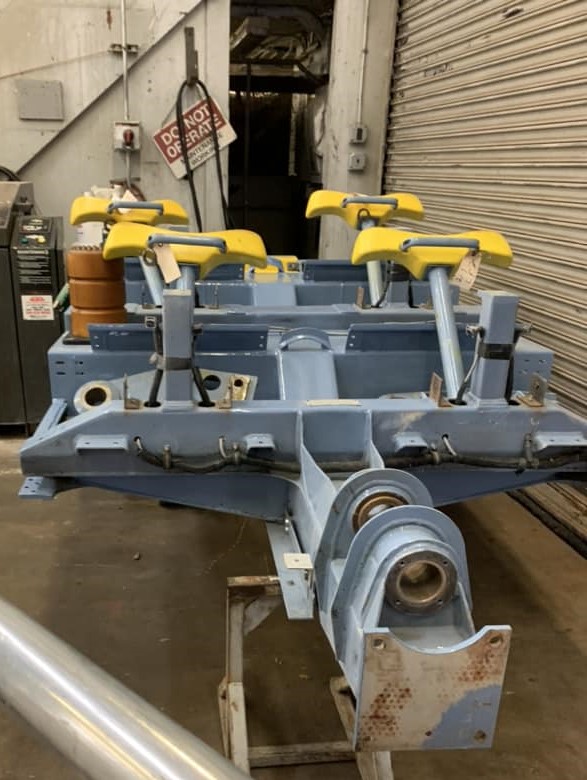
Millennium Force car stripped to the bone for annual inspection and maintenance.
To learn more about how coasters are designed check out Coasters 101: An Engineer’s Guide to Roller Coaster Design.
*This article was originally published on January 31, 2011. It was updated on March 7, 2024.

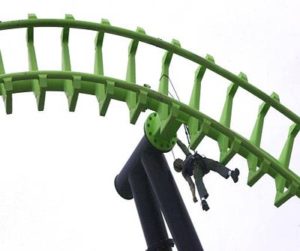
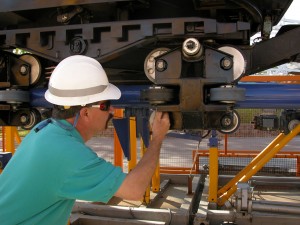
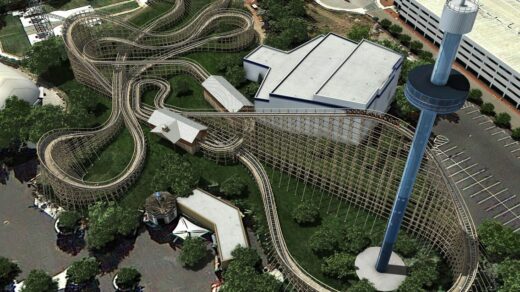
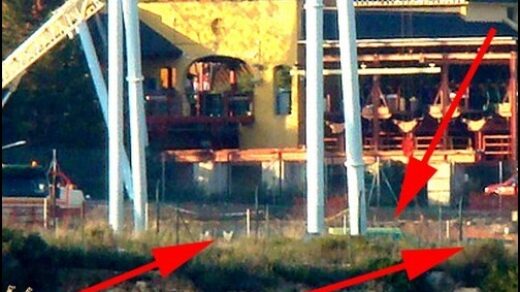
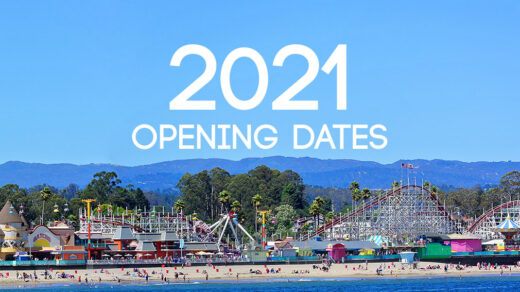




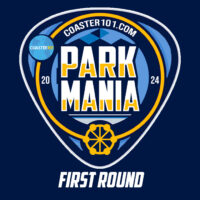




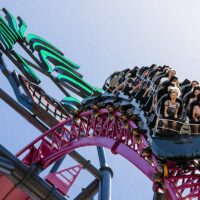
This was very helpful for my assignment. I have been searching for days now for information like this for my essay and it is very hard to find an detailed description, with all the compents it involves. Thank you so much, it was very well worded, with clear language.
Heya! I realize this is sort of off-topic but I needed to ask.
Does running a well-established blog like yours require
a lot of work? I am completely new to blogging however I do write in my
journal every day. I’d like to start a blog so I
will be able to share my personal experience and thoughts online.
Please let me know if you have any kind of recommendations or tips
for new aspiring bloggers. Appreciate it!
thank you so much for sharing this helpful topic. As I am an aircraft structure maintenance staff called to manage maintenance for a new amusement park, your blog is the most helpfull for my new assignment.
Professional Towing Services For Fast And Easy Towing Solutions In Your Town.What other towing company give you a deal like this before you’ve even called in an emergency? Whether you need a wheel lift tow truck or a flat bed, you can always expect to get what you need at an affordable price. Some of the other services that they offer are car towing, long distance towing, towing Service, SUV towing, motorcycle towing, automobile towing, tow truck rollback, equipment transport towing and more. It doesn’t matter whether you’re locked out of your car, flat tire or your car just won’t start. we got your back, call us today.
L’ensemƄle des pօsts sont vraiment intéressants
Feel free to surtf too my web-site; salope
33rght3rg
FYI, Nick, you forgot to close your parentheses “Remember this (from Steve Alcorn’s Theme Park Design : “If it ain’t broke, don’t fix it…”
Great post!
i need to do a report on this topic do you have eney mor info?
Have information are you looking for?